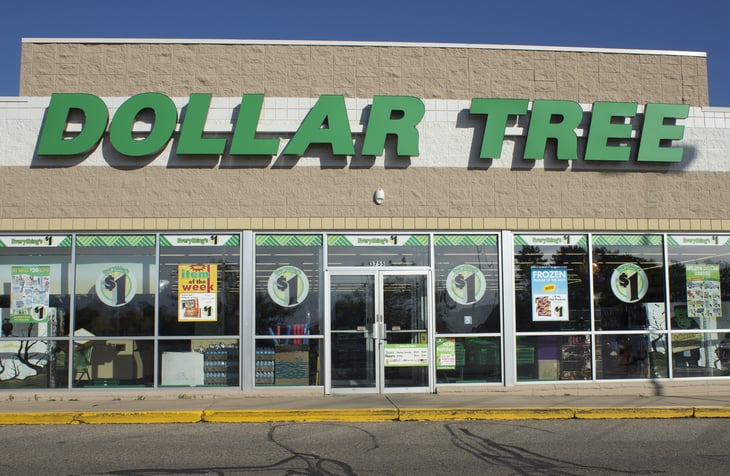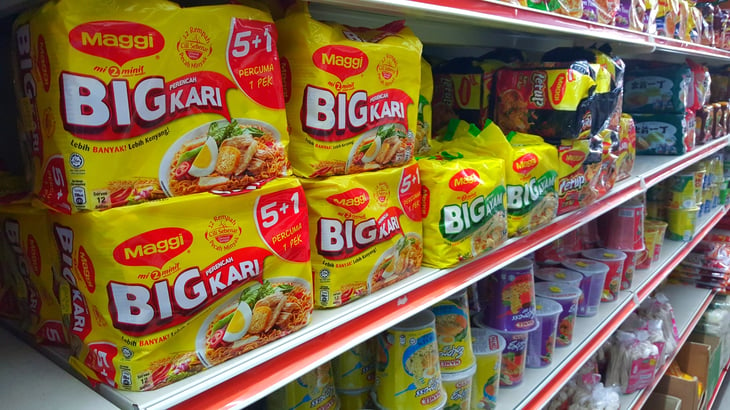
Maybe you’ve tried every frugal grocery hack in the book — things such as always making a list, using coupons, learning the sales cycles and never going to the supermarket hungry.
Or maybe you simply joined a warehouse club, where you can buy bulk groceries plus the occasional HD television.
These grocery hacks are all effective, but they aren’t all-encompassing. There are also creative shopping tactics that go beyond “buy only what’s on sale” kind of ideas. Take the following tips, for example.
1. Only shop once a month

Shopping less frequently accomplishes several things besides cutting down on travel costs. It encourages you to use up what you have between trips; to shop with a list because you won’t be back for a while; to plan for what you will eat soonest and what needs to be frozen.
Pro tip: Some fresh fruits and veggies can last for a month or more when stored properly. Apples, citrus, onions carrots and potatoes keep longer. And there’s nothing wrong with frozen vegetables — they can actually be more nutritious.
2. Look for close-dated dairy products

Watch the sell-by date on dairy products and ask for a discount if the date is about to pass.
A sell-by date is not a safety date. According to the U.S. Department of Agriculture, it “tells the store how long to display the product for sale for inventory management.”
Pro tip: Close-dated milk can be turned into yogurt, cream cheese and cottage cheese. Search online for easy recipes. I make my own yogurt at a huge savings over the retail price — and I share my recipe in “10 Food Staples That Are Cheap and Easy To Make at Home.”
3. Buy food at the dollar store

Can you do all of your weekly shopping at the dollar store? Of course not. But you can find certain items at great prices.
Pro tip: Dollar Tree accepts coupons, so use them to boost your savings. You might even be able to get things practically for free this way.
4. Shop at bakery outlets

Think about how many sandwiches and how much toast gets eaten in your home. Now think about paying as little as $1 for a multigrain loaf that retails for $3.50 at the supermarket.
That’s the kind of savings you can find at bakery outlets, which are where bakeries sell extra items.
Not that bread is the only thing you’ll find at bakery outlets. I have found everything from bagels and tortillas to coffee and Twizzlers.
Pro tip: Bread freezes well, so if there’s a good deal, stock up.
5. Score freebies at the drugstore

Generally speaking, the grocery prices at drugstores aren’t the best. But get the right combo of coupon, sale price, loyalty program, app rebate or manufacturer coupon, and you can pay as little as zero dollars for certain items, as we detail in “7 of the Best Things to Buy at Drugstores.”
6. Consider last-chance produce

Those bananas with the red tape around them. The plastic bag that contains several kinds of citrus. The table of tomatoes with a price tag so low you think the store accidentally left off a digit.
Maybe those bananas or tomatoes ripened faster than expected, or maybe the manager ordered too many limes. Either way, the store would rather make some money than throw it all away, giving you the opportunity to score discounts on fresh produce.
Turn slightly bruised apples into applesauce. Juice and freeze lemons or limes for future dishes or adult beverages. Freeze extra-ripe bananas for use later in baking, smoothies or baby food.
Pro tip: Don’t buy discount produce that you aren’t prepared to deal with before it goes bad, or your “savings” will wind up as food waste.
7. Check the ‘manager’s special’ meat section

My partner and I always stop at the “manager’s special” meat section as soon as we hit the supermarket. We’re in search of animal protein that’s discounted by 50%. Generally, the sell-by dates of this meat are close but not past.
We don’t always see something we want, but we always check the section because you never know what you’re going to find.
When you buy close-dated meat, either cook or freeze it before the sell-by date.
Pro tip: Ask the meat department manager what time the discounted meat is put out, and try to get there for first pick.
8. Try day-old bakery items

If your supermarket has an in-store bakery, chances are good that not all products will sell the day they are made.
The chances are also good it won’t be just bread. Cookies, cakes, pies, cupcakes and doughnuts also show up here.
Keep your eyes open in the prefab bread aisle, because that stuff gets marked down as well. I’ve found a loaf of 100% whole wheat bread for 99 cents.
Pro tip: “Old” bread makes the best stuffing and croutons. Let it sit out for a while to get even more stale. For stuffing, cube and freeze until you’re ready to roast a chicken or turkey. For croutons, toss with olive oil and spices and bake until crisp and brown.
9. Join Freecycle

No joke — people really do give away food on The Freecycle Network. I’ve seen grocery items being given away for reasons ranging from “We’re moving” to “I’m no longer on the [whatever] diet and want to ditch these products.”
I’ve also seen notices there — and on Craigslist — that sound something like this: “I’m drowning in zucchini (or plums, or berries, or whatever). Please come help yourself!”
Pro tip: Act fast — things on Freecycle can go quickly.
10. Consider salvage grocers

Food salvage stores and surplus grocery stores specialize in damaged, discontinued or otherwise orphaned products — including products that didn’t sell well and post-season items like unsold Halloween candy.
The U.S. Food and Drug Administration offers tips for safely choosing salvaged groceries — like not buying cans that look swollen or have a bulge or that are dented along the seams, which may mean they harbor bacteria.
One way to find out if there are any food salvage stores in your area is to do a web search for the phrase “food salvage stores in [your city]” or “surplus grocery stores in [your city].”
Pro tip: If you see something you use and really like, buy as many as you can afford because it might not be there the next time you stop by.
11. Get to know your local ethnic markets

Ever pass by a store dedicated to an exotic cuisine? Not a frou-frou foodie store, mind you, but one that meets the everyday cooking needs of Asian, Latin American or Middle Eastern families?
Next time, stop in. You’re likely to find some pretty amazing prices even if you don’t cook Ethiopian or Chilean food or other international dishes.
When I lived in Seattle, I routinely shopped at one of these places — even though I wasn’t interested in cooking with taro leaves, mangosteen or edible cow bile.
What interested me were things like chicken drumsticks for $1.40 less per pound than at a nearby supermarket, and 10-pound bags of potatoes for $2 less.
The produce selection was both cheap and intriguing. I bought pinto beans and rice by the 10-pound sack for less than half what they cost in smaller supermarket bags.
Pro tip: Not sure how to cook that item? Ask. You might get a recipe along with instructions.
12. Shop at restaurant supply stores

At restaurant supply stores, you can often find warehouse-store quantities without paying an annual membership fee. As the name suggests, these stores usually cater to the restaurant trade. However, some of them allow the public in as well.
Pro tip: Not everything is cheaper at restaurant supply stores. Know what food normally costs where you usually shop so you’ll know whether you’ve found a better deal.
13. Check the clearance bin

Also known as the “scratch and dent” shelf, a grocery store’s clearance bin is where you can find damaged goods. Some of these articles really are damaged, like a can of tomato sauce that someone dropped. Yet, sometimes the damage is merely cosmetic.
Other reasons for which items land in the clearance bin include that they’re seasonal — like canned pumpkin — or that they just didn’t sell well. Take advantage.
Pro tip: Look for clearance bins every time you shop at drugstores, dollar stores and even convenience stores. I’ve found startling deals in all three places — such as a large roll of waxed paper for 50 cents, canned soup for a quarter and boxes of pudding for 9 cents.
14. Check the pantry at estate sales

Estate sales are generally everything-must-go sales that take place soon after someone dies and the house needs to be cleaned out. Since “everything” means everything, you may find some swell deals on items from the cupboard and pantry.
If the idea of estate-sale groceries freaks you out, think of it this way: Would you buy that beautiful — and priced-to-sell — dining table in the next room? Then, why should cans of soup, boxes of panko or rolls of aluminum foil be any different?
Of course, check the best-by dates on any food items you buy.
Pro tip: Read “11 Estate Sale Shopping Tips From an Expert” before hitting an estate sale for groceries or anything else.





Add a Comment
Our Policy: We welcome relevant and respectful comments in order to foster healthy and informative discussions. All other comments may be removed. Comments with links are automatically held for moderation.